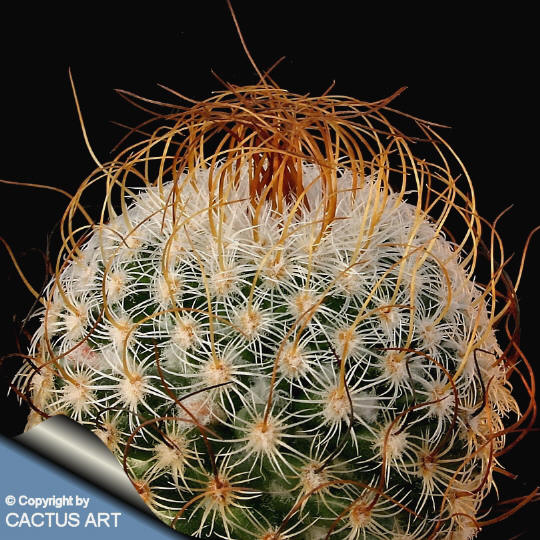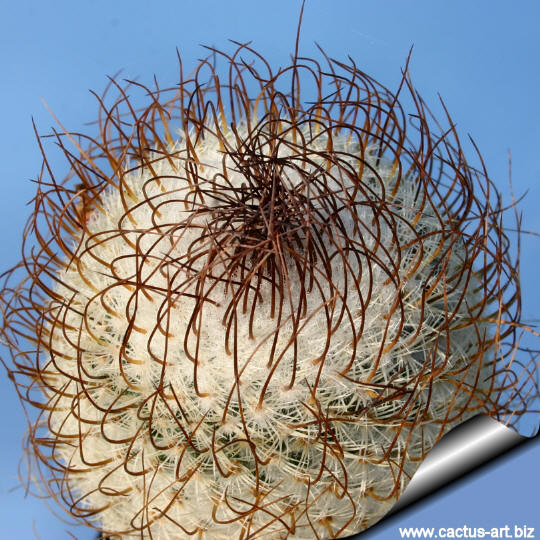|
|
|
Family:
Cactaceae (Cactus
Family)
Scientific name: Mammillaria
huitzilopochtli ssp niduliformis (Lau 1994) Pilbeam 1999
First description by Lau, Mamm. Soc. J. 34(4): 46-49 – 1994.
(Mammillaria huitzilopochtli var. niduliformis)
Origin: Mexico (Oaxaca, Tomellin Canyon, Tecomavaca).
Altitude 450 - 500 m.
Conservation status: Listed in
CITES appendix 2. Bibliography:
John Pilbeam (1999) - Mammillaria The Cactus File Handbook - page 143.
Edward F. Anderson (2001) - The Cactus Family - page 423.
|
Description: Solitary or slowly clumping in untidy clumps., up to 8
cm tall, 6 cm wide.
Stems: At first spherical, later cylindric, 8 cm high, 6 cm in
diameter, slightly depressed.
Axil: With dense white wool in the flowering area.
Radial spine: ± 22, glassy whie, brown at base, 1.5 mm long.
Central spine: 2 (occasionally up to 4), brown or black, 2 cm
long, curving, one up one down, the lower slightly longer, flexible,
thicker at the base.
Flower: Bright pink to carmine, 15 mm long, 10 mm wide. Stigmas
carmine.
Fruit: Red.
Blooming season (Europe): Winter (from November to March)
Seed: Brown, very small.
The differences between the subspecies are:
-- ssp. huitzilopochtli: has 0-1 central spines and up to 30
radial spines.
-- ssp. niduliformis: has 2-4 central spines and up to 22 radial
spines per areole.
|
|
|
 This is a beautiful plant with long curly spines.
This is a beautiful plant with long curly spines.

Cultivation: It is a
relatively rapid growing species.
This is easily grown into clumps, but it does often have
an irregular pattern of offsetting. Water regularly in summer, but
do not overwater (Rot prone) Use pot with good drainage and a very porous
potting media, keep dry in winter.
Feed with a high
potassium fertilizer in summer.
It is quite frost resistant if kept dry, hardy as low as -5° C.
Outside full sun or afternoon shade, inside needs bright light, and some
direct sun.
Easily flowering. Most plants will offset readily, and clumps can be
produced in a few years.
Propagation: Division, direct sow after last
frost.
|
|
Photo of conspecific taxa, varieties, forms and
cultivars of Mammillaria huitzilopochtli.


|
|